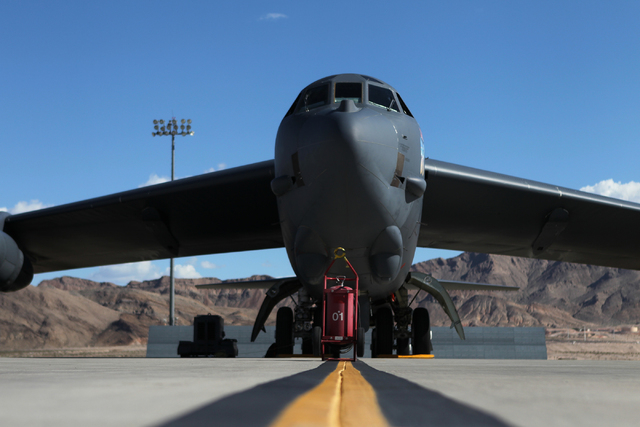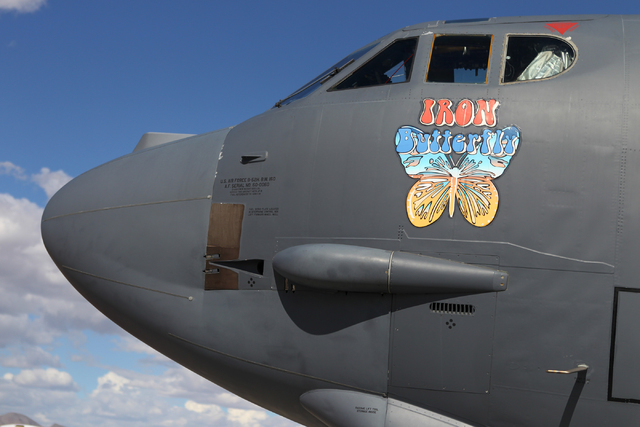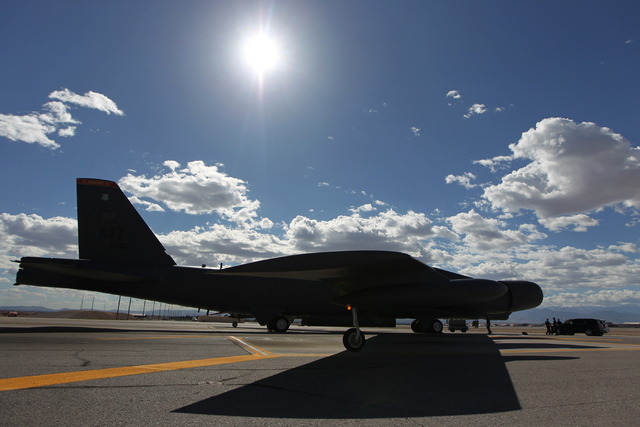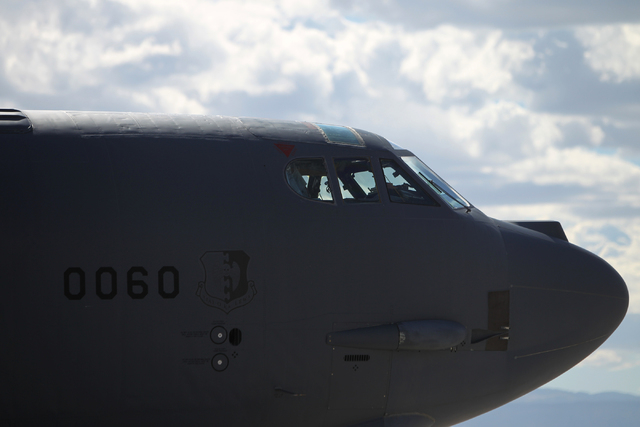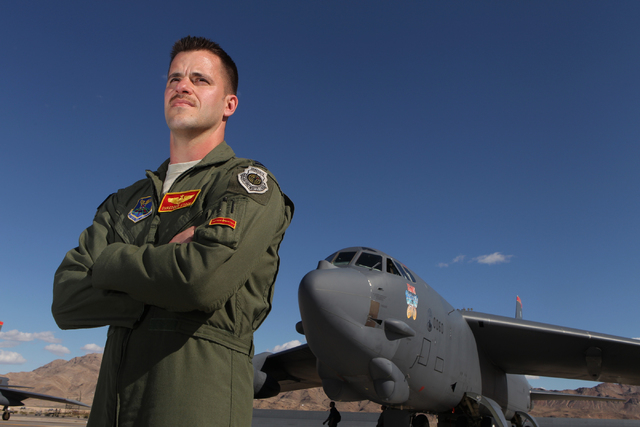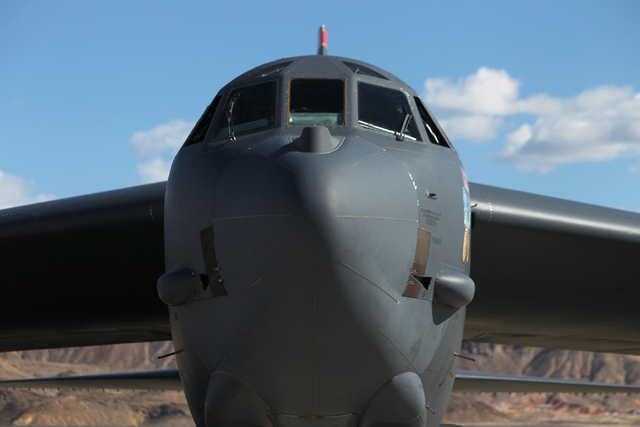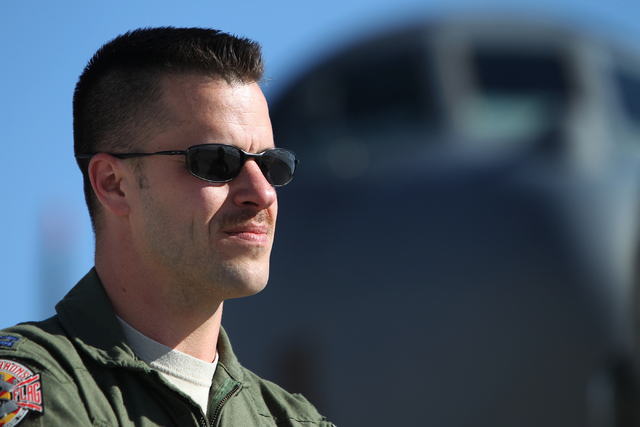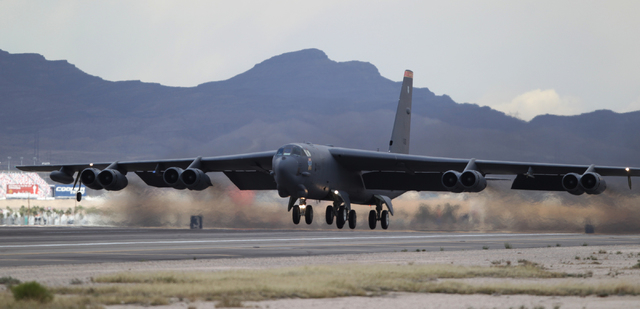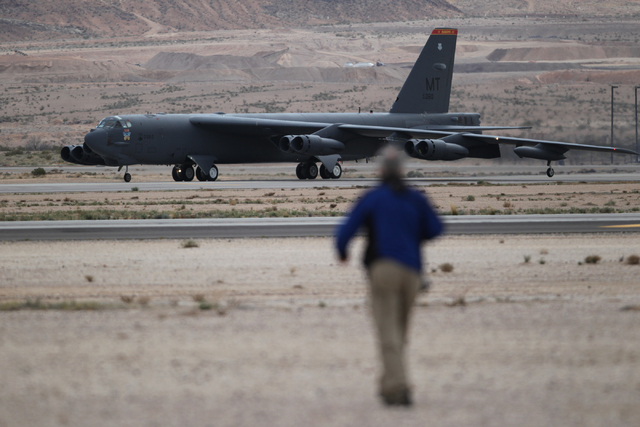B-52 bomber a marathon aircraft both in time and distance
They’re big. They’re ugly. And they fly.
No, they’re not mosquitoes from Alaska.
They’re B-52 Stratofortress bombers from North Dakota.
And they’re old, too. Older than the pilots who fly them.
The one that 36-year-old Capt. Jeffrey “Shredder” Stock flew in last week’s Red Flag air combat exercises at Nellis Air Force Base — the B-52H “Iron Butterfly” — was built in 1960, almost 20 years before he was born and during the same decade that the bomber’s namesake psychedelic rock band released its 1968 hit, “In-A-Gadda-Da-Vida.”
Like the music that keeps on playing, B-52s have outlived the existence of the nuclear-strike-ready Strategic Air Command. They now fly along with its stealthy young sister, the B-2 Spirit long-range heavy bomber, for the Air Force Global Strike Command.
Despite the B-52’s age and simplicity — “this was basically designed on a cocktail napkin,” Stock said — they have proved they can handle their globe-trotting duties for both conventional and nuclear weapons. For the past 10 years, they have supported a continuous bomber presence to maintain security and stability in the Pacific region.
This year marks the 60th year they have been in operational service.
During those decades, B-52s have evolved with the changing technology from dropping gravity bombs to now laser-guided and GPS “smart” bombs. They now have computerized navigational and targeting systems. And, they can deliver just about every type of weapon in the Air Force inventory except for air-to-air strike missiles. But they can fire air-launched cruise missiles.
The number of bombs and missiles varies based on mission requirements. Aside from the munitions that are mounted under the wings, the bomb bay in the plane’s belly can hold up to a couple dozen more.
“Some people actually call it the iPhone of the sky,” he said. “If you have any new weapon or any other technology you can basically bolt it on. We take it. Integrate and go with it.”
B-52s currently flying for Minot Air Force Base’s 5th Bomb Wing in North Dakota and the 2nd and 307th Bomb wings at Barksdale Air Force Base in Louisiana are expected to remain in service “to 2040 and beyond,” Stock said.
“Some people ask why are you going to keep that old of airplane flying? But the flexibility the B-52 brings to the table is amazing.”
Its versatility makes it a keeper. In a conventional conflict, besides delivering a wide variety of weapons, it can release decoys to protect a fleet under attack while also providing close-air support offensive countermeasures and support for maritime operations.
The B-52H is a marathon aircraft both in time and distance.
The bomber can fly at high subsonic speeds at altitudes reaching 50,000 feet. It has eight Pratt & Whitney turbofan jet engines, “and we’ve got a range of about 8,000 miles unrefueled. So we can literally fly around the world,” said Stock, a 2006 ROTC graduate from the University of Nebraska Omaha.
“I’ve flown about a 33-hour mission myself basically halfway around the world and back without landing. So basically we’re limited by crew endurance,” he said.
Fully loaded with bombs and fuel, a B-52H weighs 488,000 pounds, including the fuselage, wings, tail, gear and other components.
Because of that, the B-52 is equipped with tandem-wheel landing gear as well as single-wheel supports near the tip of its swept-back wings to handle sag from the load of bombs and fuel and prevent the wings from scraping the runway on takeoff.
“Sometimes you forget you’re in such a large airplane sitting at the controls of this thing,” Stock said.
“For how big it is, it is really a lot more nimble than I thought it would have been. Sometimes it can be a handful, like you’re wrestling a pig down the runway.”
The once-classified, flexible-joint design of the main landing gear is a safety feature to compensate for the lack of a capability to dip wings into the wind.
“With an aircraft like this where the wing actually goes down if you dip it into the wind you’re going to obviously hit the ground. So what they designed, what used to be classified, is our main landing gear, so (it) turns in the direction of the runway and the nose of the airplane will be flying into the wind,” he said.
“There are many times I’ve flown toward the runway looking over my left or right shoulder … trying to land the airplane off my left or right shoulder as the airplane is flying down the runway,” he said.
To keep B-52s flying through 2040, the Air Force is upgrading the fleet of about 75 aircraft with combat network communications gear such as digital display screens, computer network servers, and real-time “beyond the line of sight” communications links.
“Over the past two decades we’ve seen rapid advancements in technology, and that has really changed the way we operate on the battlefield, especially in the information environment,” Maj. Gen. Scott A. Vander Hamm, commander of the Eighth Air Force, told airmen of the Global Strike Command during a ceremony for the first upgraded B-52 last year at Barksdale Air Force Base.
“What hasn’t changed is the need to advance our capabilities and integrate those technologies with information to provide our air crew with the most up-to-date information and the ability to act on it.”
Upgrades for the network communications system take 7,000 man-hours to complete, or about nine months per aircraft.
But it’s worth the time and money because “the B-52 is here to stay,” Vander Hamm said.
Contact Keith Rogers at krogers@reviewjournal.com or 702-383-0308. Follow @KeithRogers2 on Twitter.




